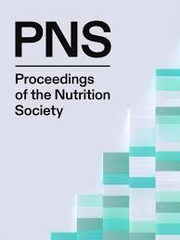No CrossRef data available.
Article contents
The calorie reduction programme has led to minimal nutrient changes in foods in the UK: using myfood24 food composition data
Published online by Cambridge University Press: 09 October 2025
Abstract
Reformulation of food products is part of the calorie reduction programme, proposed by the UK Government in the report ‘Childhood obesity: A Plan for Action’. The food industry was challenged to reduce calories in products by 20% in 2025. An evaluation of the food supply in 2021, one year after the guidelines were published showed very little progress(1). Our aim was to explore the extent of changes in energy and nutrient levels in specific food categories targeted by the calorie reduction programme using the myfood24 database.
We compared the myfood24 UK branded food composition database between 2021 and 2025. The data is from back of pack nutrient information. Differences in nutrients declared between these time points were explored as a potential indicator of reformulation. Five food groups matching the Calorie Reduction Programme food categories were explored for changes between 2021 and 2025. Also, foods from these groups with the same European Article Number (EAN) were matched. myfood24 food databases are regularly reviewed and updated taking account of recipe changes, new products and reformulation. During this time ~47,000 food items (37% of the database) had nutrient information updated. Nutrient composition of foods/100g were compared using t-tests and paired sample t-tests.
11,342 foods from 2021 and 26,908 from 2025 in the 5 food groups selected were identified. In 2025, these were 32% cakes and sweet bakery; 2% fried foods; 9% pies, pastries and quiches; 18% pizza, pasta and garlic bread; 40% prepared meals. Overall, in 2025 compared to 2021, mean nutrient content/100g food was 3.5kcal (95%CI 0.4, 6.4) lower. Food groups with lower energy content in 2025 v. 2021 were cakes and sweet bakery (-8kcal/100g); fried foods (-7kcal/100g); pizza/pasta/garlic bread (-11kcal/100g). Pies/pasties/quiches (5kcal/100g) and prepared meals (12kcal/100g) had higher energy values. 10,177 products with the same EANs in 2021 and 2025 were matched. There was very little change between 2021 and 2025. Energy content of pizza, pasta and garlic bread had reduced in 2025 by 0.6 (95%CI -1.1, -0.06) kcal/100g this was statistically significant but extremely small. Total sugars also saw a very small reduction in 2025, which was statistically significant in cakes and sweet bakery (g/100g difference 2025-2021: -0.1, 95%CI -0.2, -0.5. P <0.0001). Total fat g/100g had also reduced by a very small amount, which was statistically significant and driven by reductions in cakes and sweet bakery, fried foods, pies, pasties and quiches. Portion sizes declared had also not changed.
Very small changes in macronutrient levels in key food categories during the period 2021 to 2025 were seen. These changes are not sufficient to deliver the calorie reduction targets set in 2020. The UK government needs to explore other levers to make progress in this area.
Information
- Type
- Abstract
- Information
- Proceedings of the Nutrition Society , Volume 84 , Issue OCE4: Nutrition Society Conference 2025, 1-2 July 2025 , August 2025 , E291
- Copyright
- © The Author(s), 2025. Published by Cambridge University Press on behalf of The Nutrition Society


